
AndrewD
[HoMe Moderator]
12829

Interview: Felix Baumgartner of Urwerk
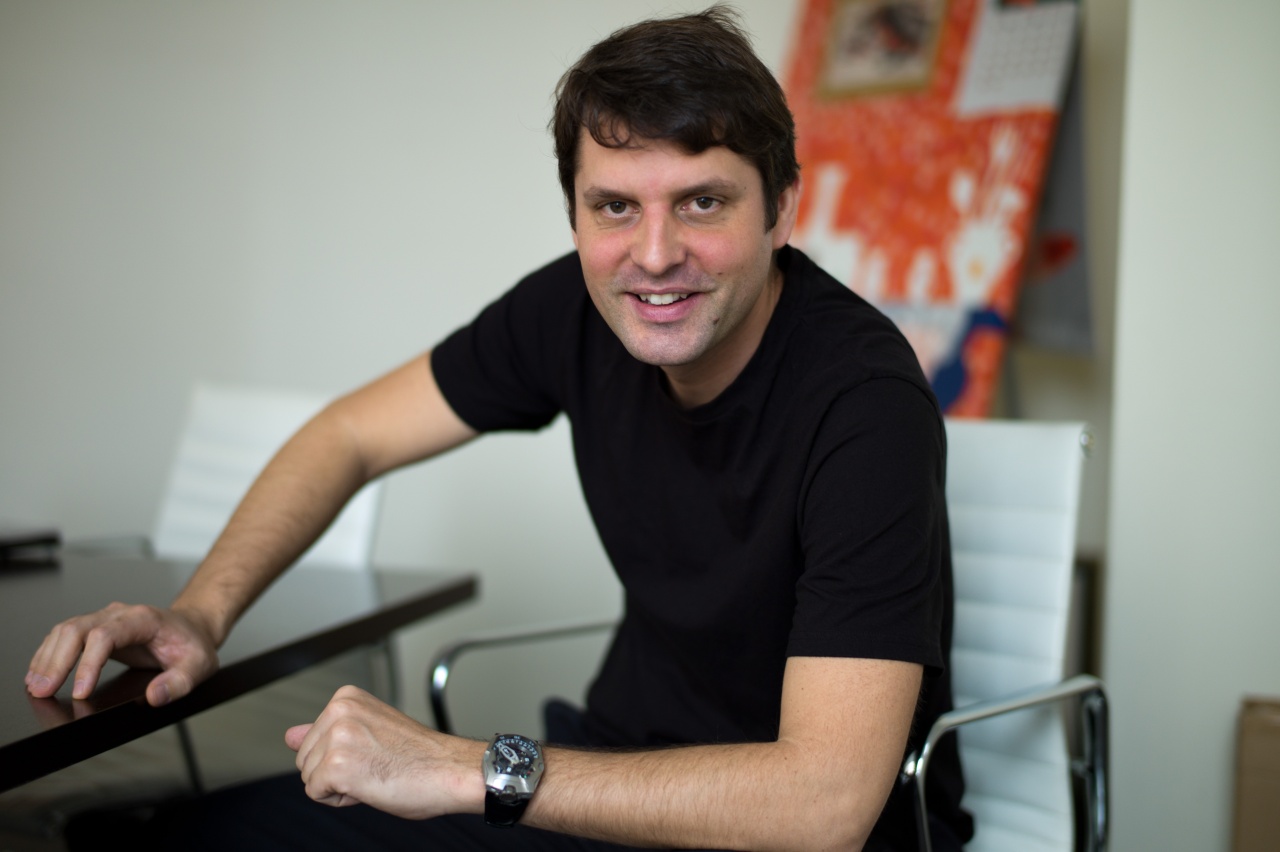
It was my pleasure to spend time with Felix Baumgartner of Urwerk. Felix has steered his company from small beginnings in the mid 1990’s, through the early days of the explosion of independent watchmaking and has created a niche specializing in novel displays of time. But despite the modern aesthetics in Urwerk watches you will find the ideas and execution deeply rooted in traditional horology. Felix speaks eloquently and with great passion about his work and I promise you will enjoy this discussion very much.
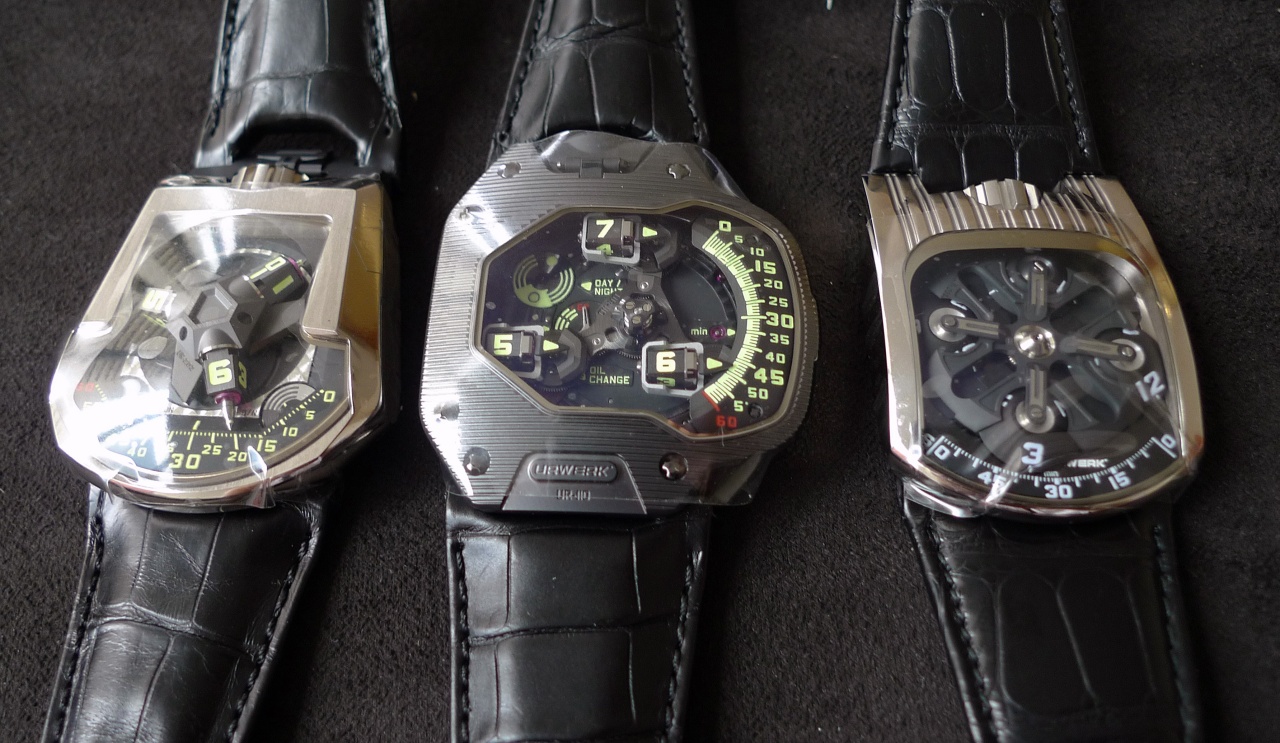
Felix began the discussion at the best place … with the watches. We passed some classic Urwerk pieces back and forth and he shared their stories:
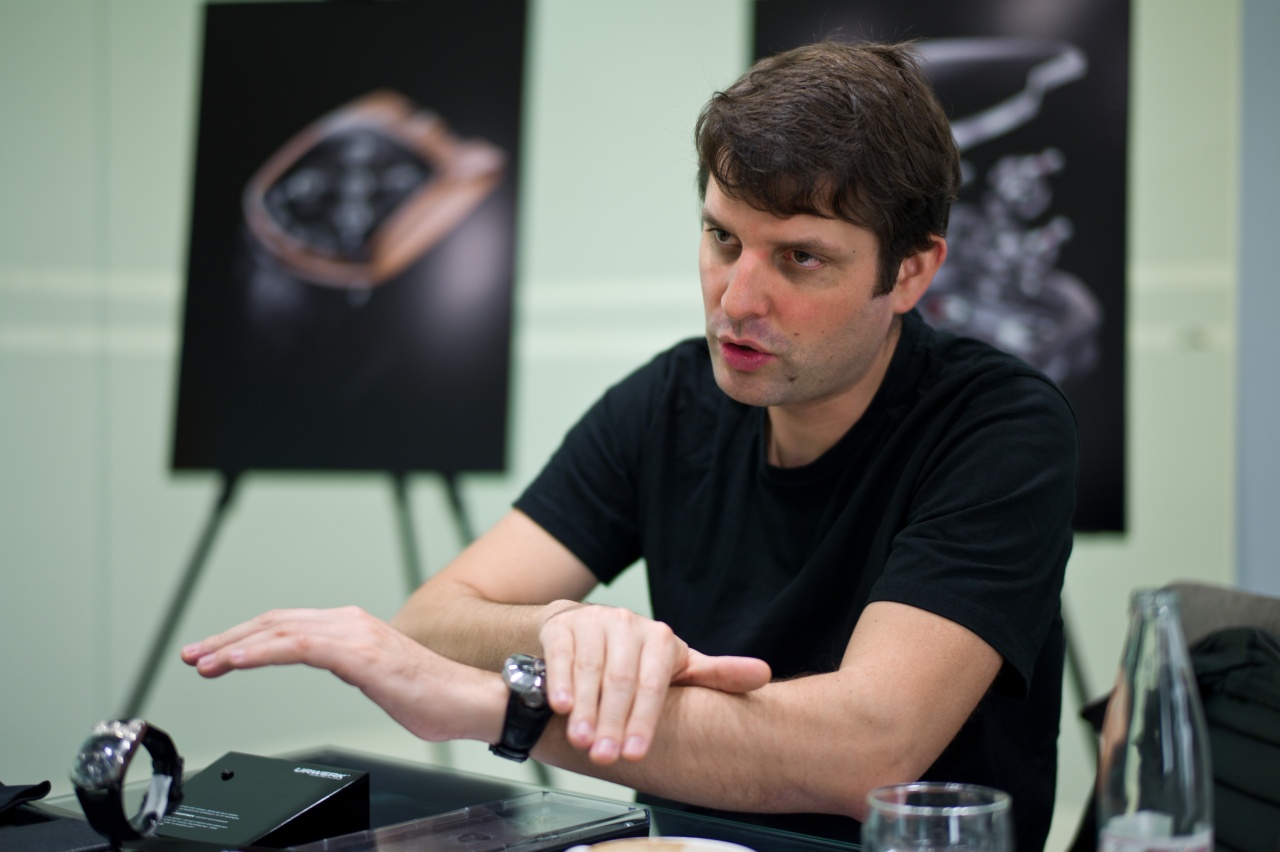
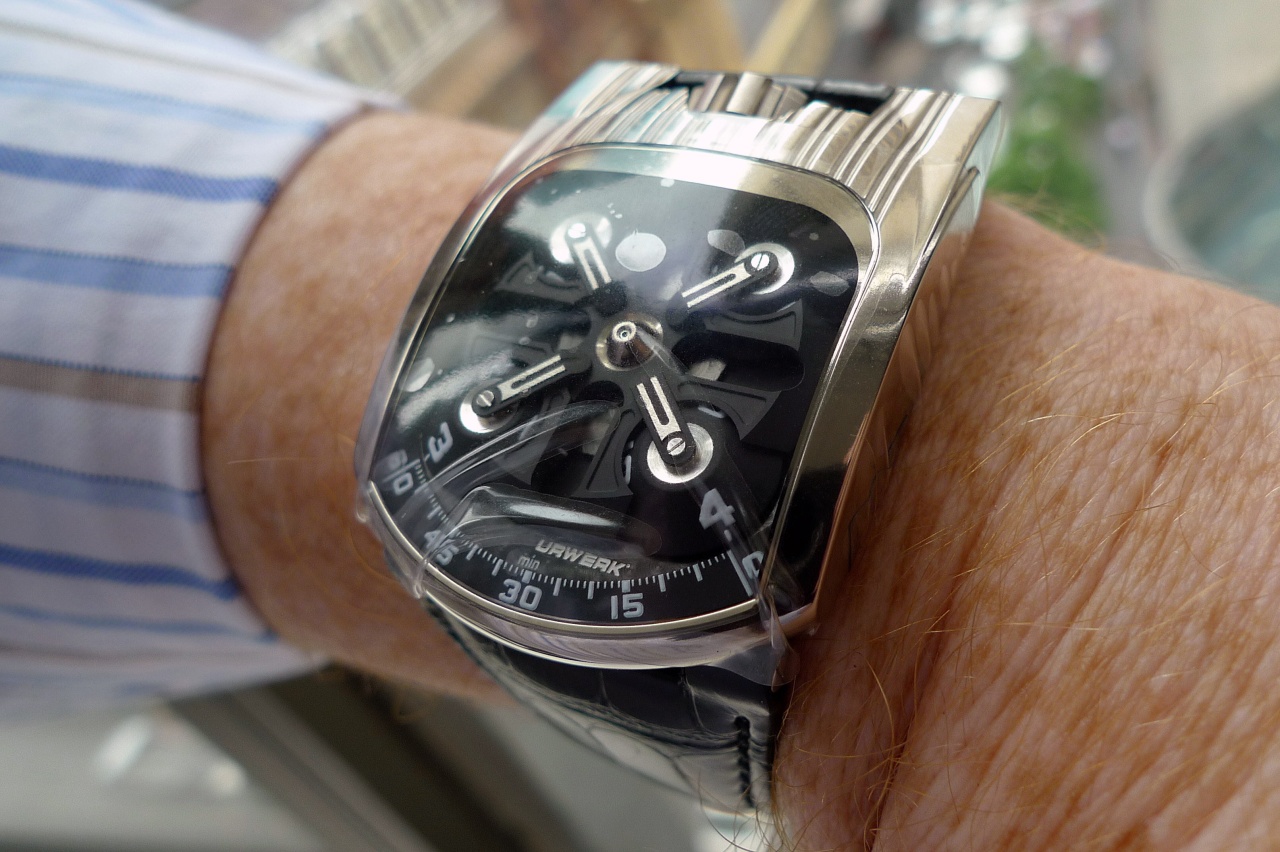
“The 103 was introduced in 2003 and the 202 was introduced in 2008. What you see is an evolution from a manual wind watch to an automatic watch to a turbine which you can regulate."
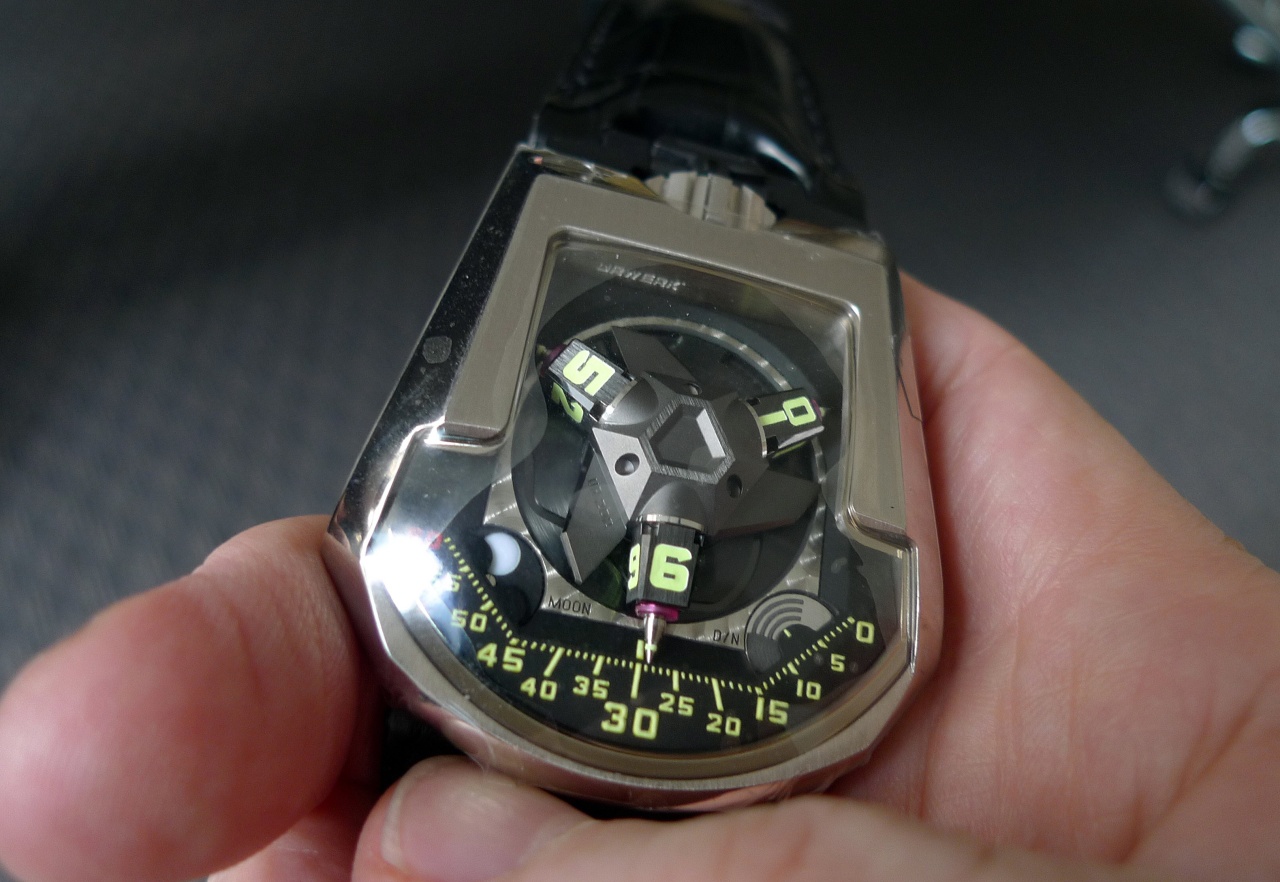
"We continued to develop the interaction between the watch and the wearer. The 110 was introduced in 2010, coming with the revolving three planetary gears showing the time on the right. You don't have to turn your wrist to read the time."
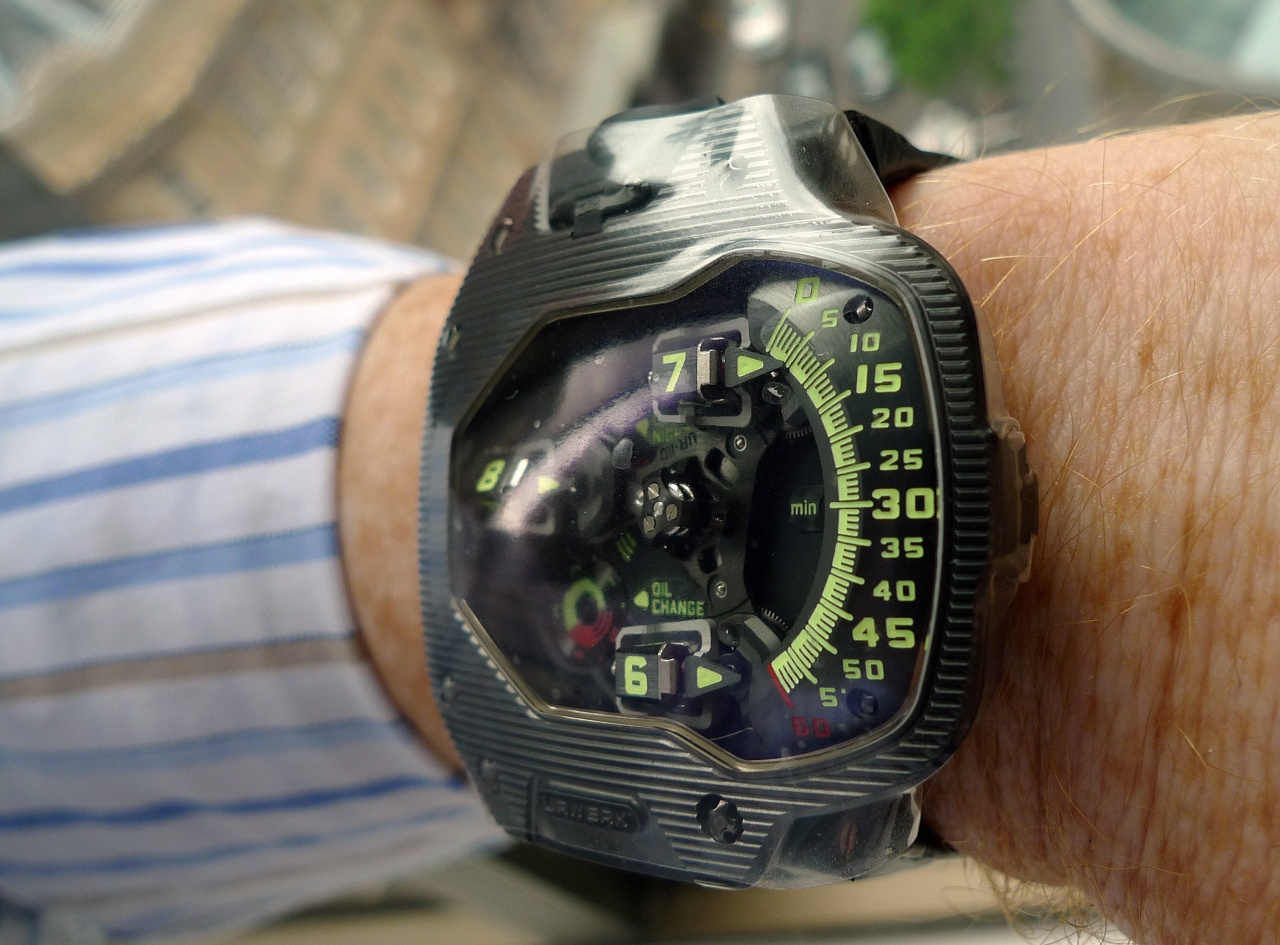
"Now the latest piece released in 2012 is the 210 which continues the '200 family'.”
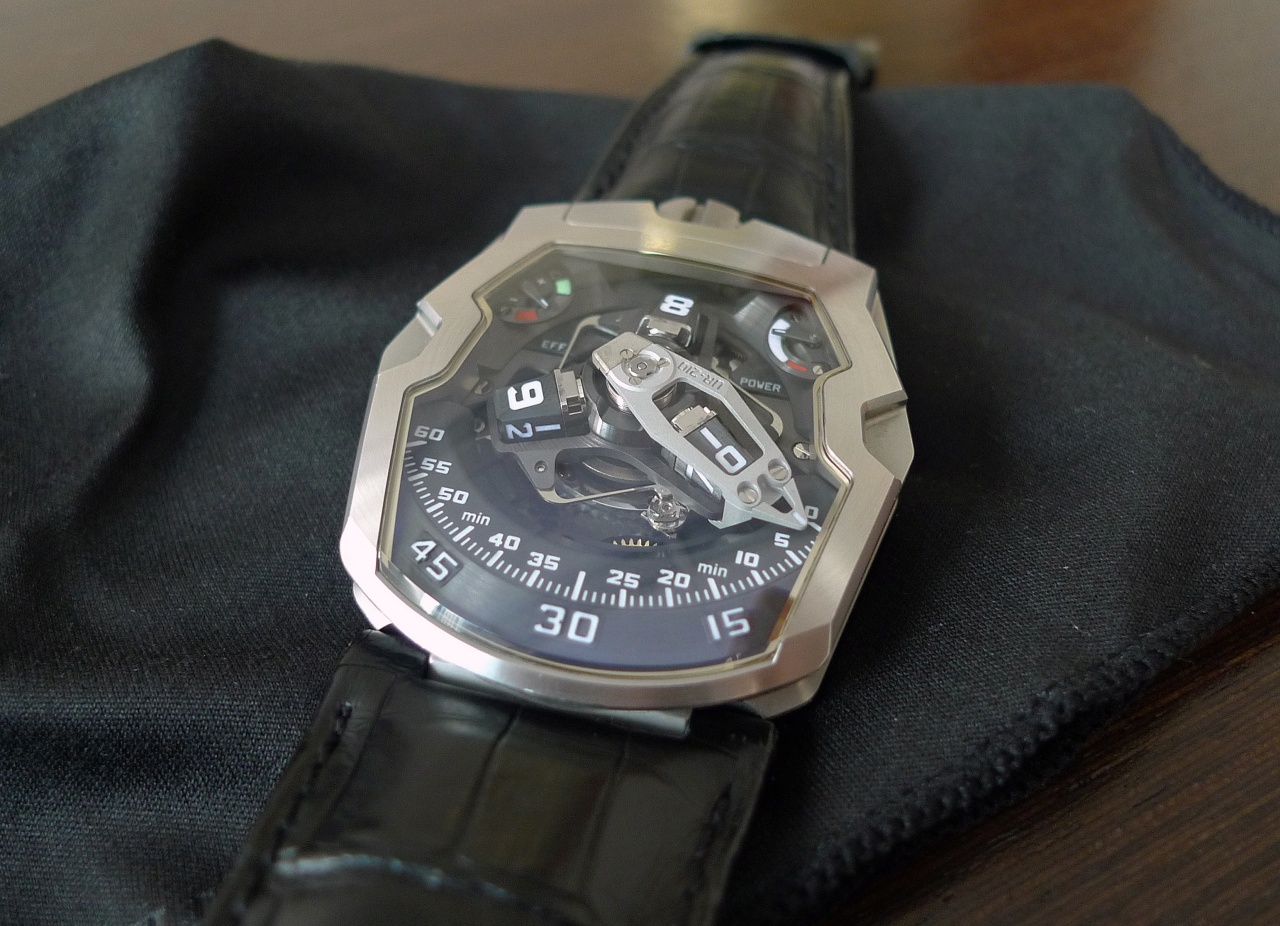
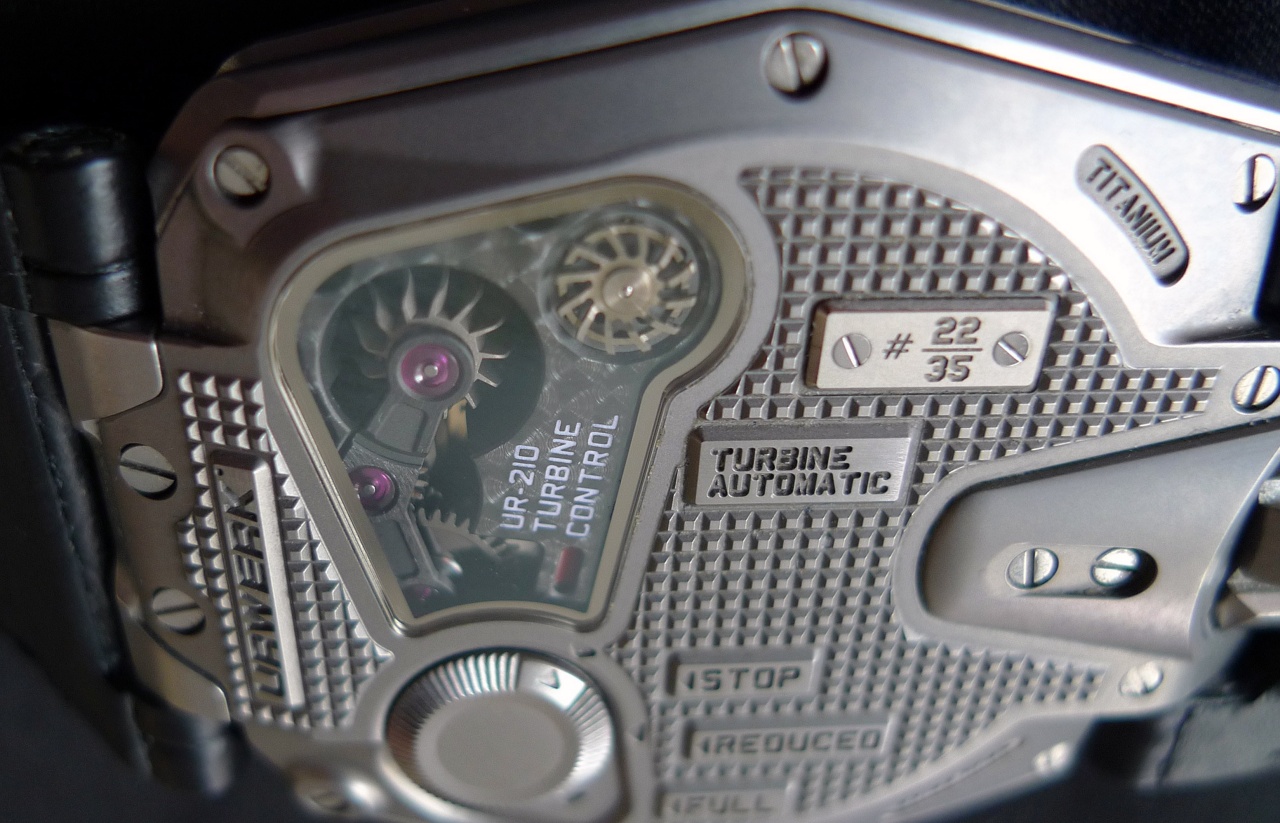
I asked Felix if he felt more constrained with his design because he had been evolving the same idea for more than 15 years.
“Over the last 15 years we have followed a consistent design with the revolving satellites. We do this because it is a very simple and intelligent alternative way to tell the time. With one glance you see the hour, as well as the minutes, displayed. This idea came from time spent with my father. He was restoring clocks and I saw a clock without hands: the 1652 Companus Brothers clock which was designed to read the time at night.
I finished Watchmaking School in the 1990's. At this time all the complicated watches were very traditional with multiple hands to display different aspects of time. This was a period when Franck Muller was making the most complicated pieces with multiple hands. We had to stop and find another approach, with new values; we wanted to follow a different path. My grandfather worked with IWC and my father restored clocks and I wanted something to keep me going for another 40 years!
I started working with Martin Frei, which in English means Free and he is truly free. He creates movies, conceptual art and architecture and he brought new, free ideas to watchmaking. He provided me with the possibilities to go in new directions.
In the beginning people did not understand what we were trying to do. But we kept with our vision and were sure that one day people would start to respect and appreciate what we were creating. We persisted and then in 2003 we released the 103 and people’s eyes were opened. The control board on the rear was a new idea for wristwatches with the ability to control the watch from the outside, although the original idea was used on clocks and pocket watches and is actually a very old idea.
We try to create a relationship between the owner and his watch: manual winding, fine tuning, automatic winding sensitivity.”
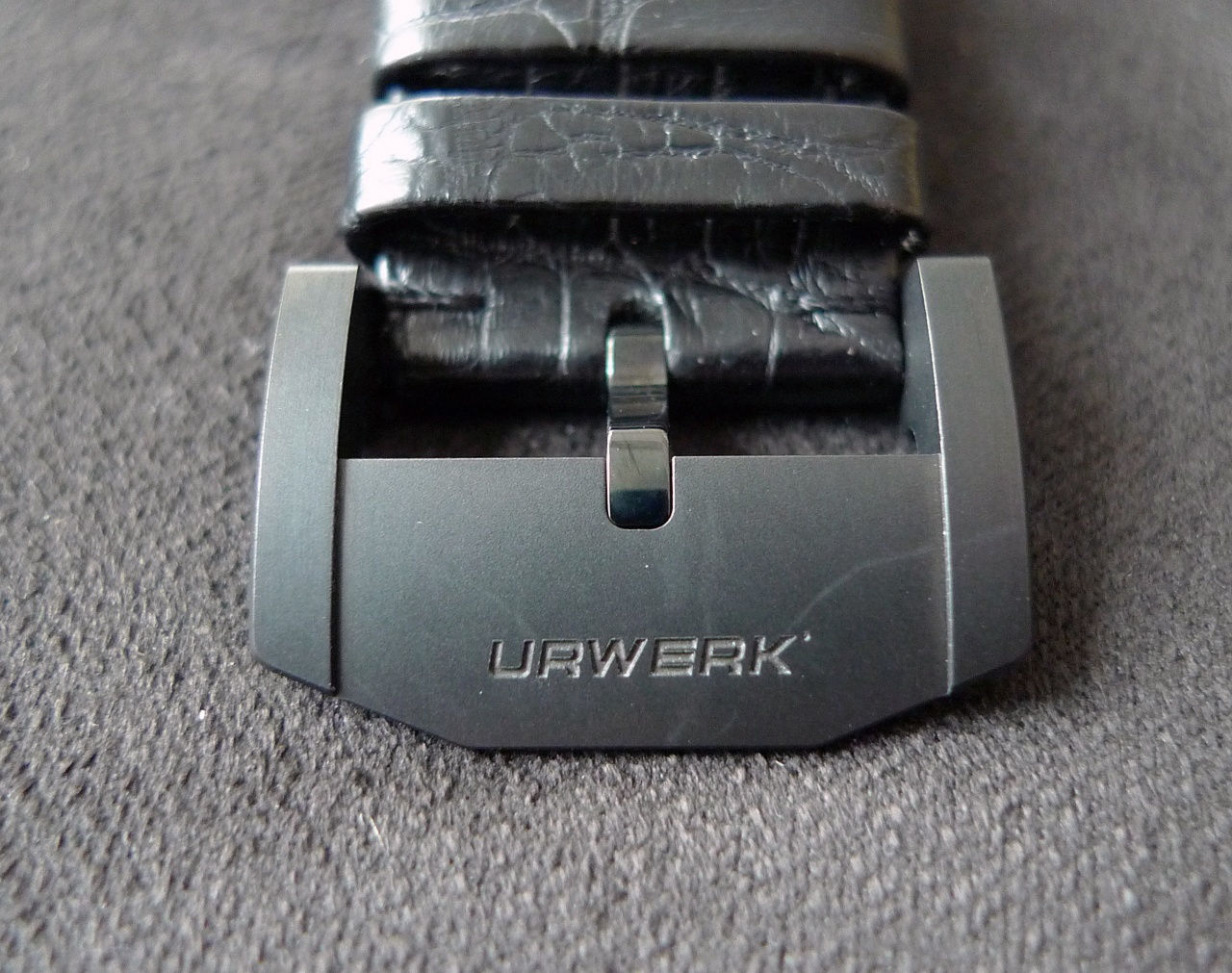
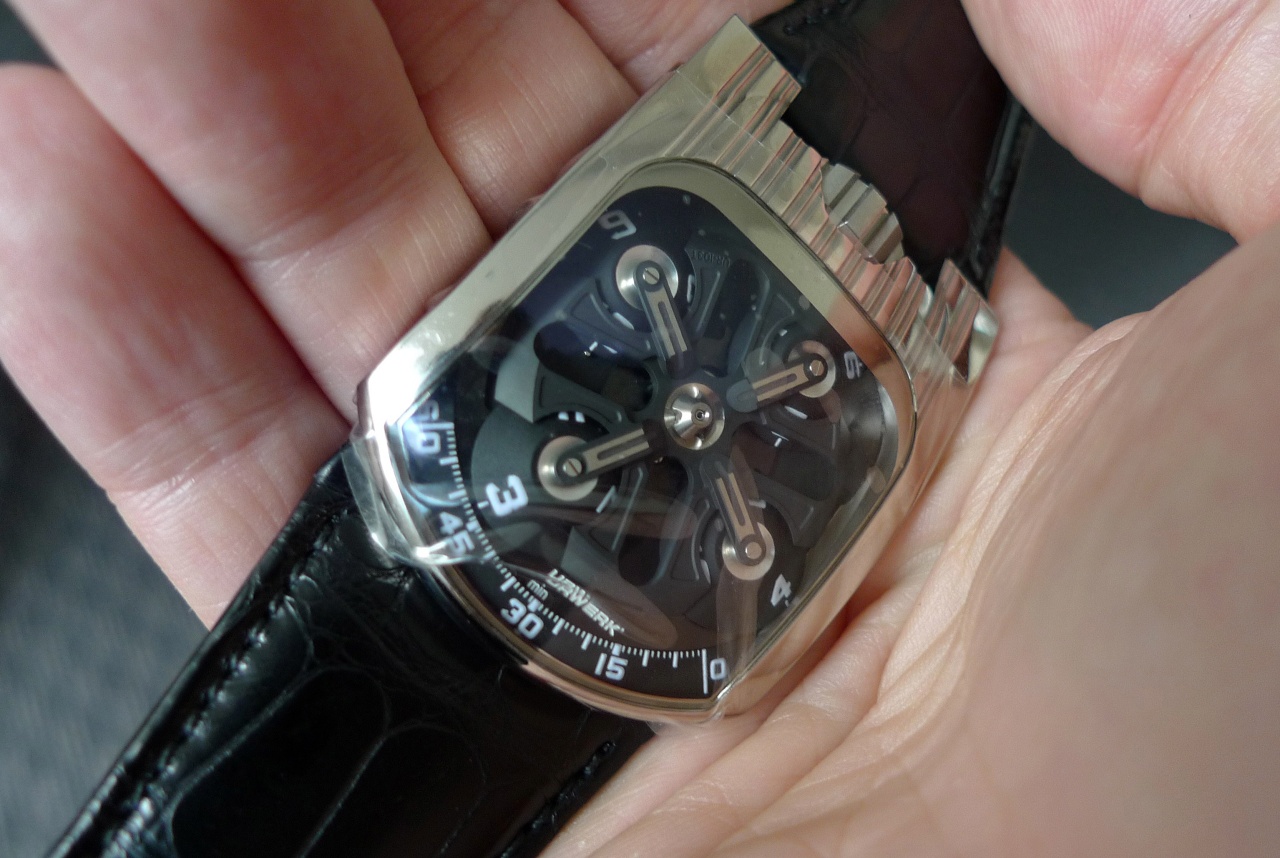
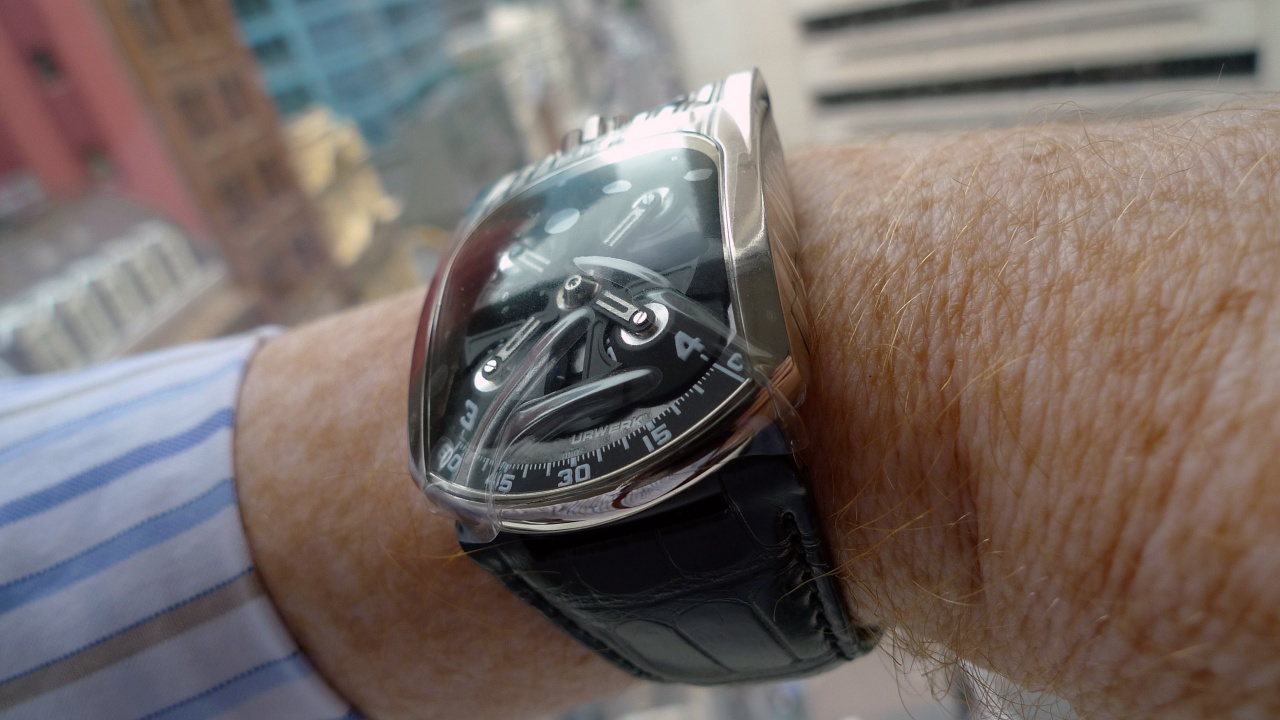
I asked Felix to explain the adjustment to the automatic winding sensitivity.
“Buffer automatic winding is simple. There is a classic uni-directional winding rotor in a kind of heavy tungsten. When the rotor does one turn the turbines do six turns. The turbines are regulating winding just as the regulator of a minute repeater controls the speed. When the chamber is open the air can move through and there is virtually no brake. When the holes are closed it creates a brake and slows down the rotation by 20%. Visually it provides a lot of movement.”
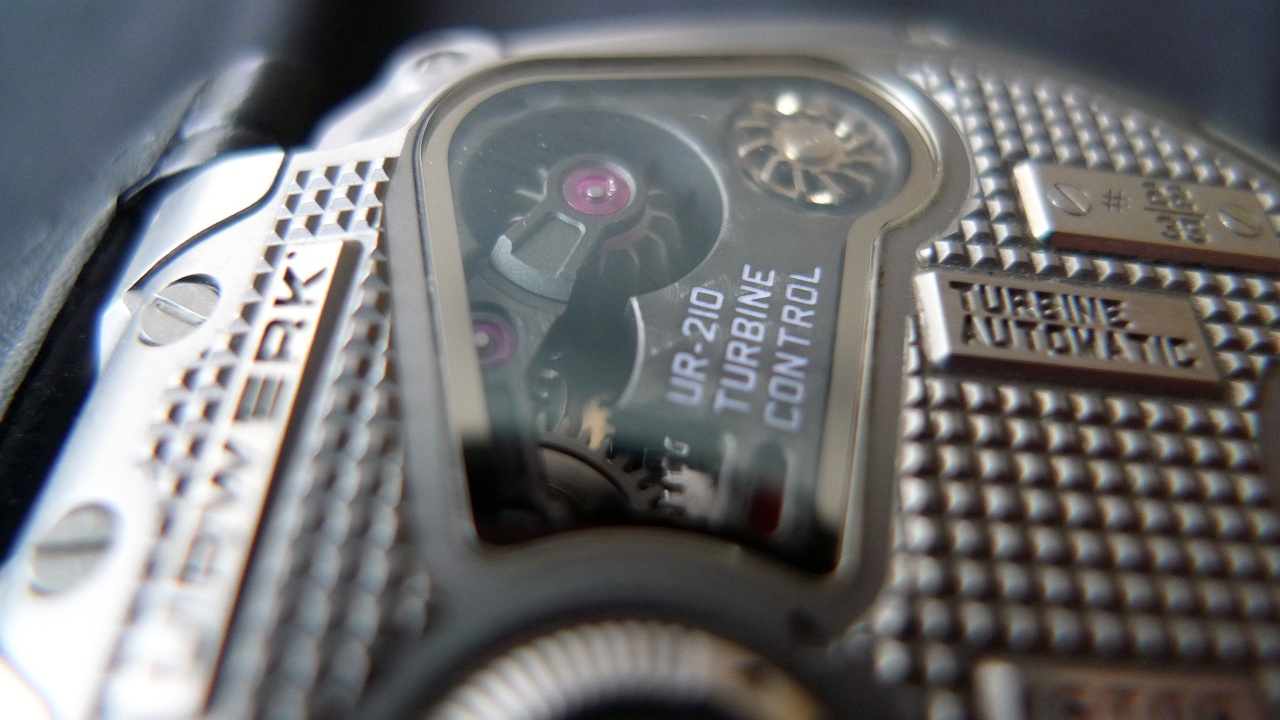
I was interested to understand the collaborative process and relationship between Felix and Martin …
“I was trained as a watchmaker. I decide mostly on the mechanical and functional side. Martin is the designer-artist, but I also contribute to the design and sometimes Martin contributes to the mechanics. It is a true collaboration. The technical ideas come from my side and we ping-pong ideas back and forth. Eventually we are both happy. And then we pass our ideas to the engineers.
Then Dominic and Cyrano (whom I met in watchmaking school 20 years ago) develop the computer drawings. Then these go to our Atelier in Zurich where we start to fashion parts on our CNC machines. We have the ability to make most of our parts today as well as the dials.
The only parts we get from specialist outside suppliers are screws and rubies but the cylindrical hairspring (spiral) we worked with a company to develop for us. A cylindrical hairspring is always balanced.
We have a team of 15 people producing 150 watches per year. We have kept this number static for the last 6 years. This is the right balance to pay back our investments, to invest in the future, but not to have a company structure which is too big. It is actually a challenge to keep the company at this size because everyone around us wants more. But I impose this because between creation, innovation, sales and cash flow this is the right balance. Many companies feel they need to grow for financial reasons, but we are happy.
In Geneva we do assembly and communication. Zurich is concept, construction and machining. I spend a lot of time travelling between the two, but my family is in Geneva.”
Do you feel the pressure of deadlines and how do you approach the watch fairs?
“After 15 years you develop a certain rhythm. We do use the watch fairs, not so much to launch a new product, but to have a goal for the whole team. We could play our ping-pong game forever [laughing], but the fairs allow us to finish the game at a point when we are reasonably happy. At a certain moment someone has to say: “let's do it” and I say to the team "Basel is coming!" and that focuses everyone on that goal.”
The satellite display of time has been a focus of Urwerk for 15 years. Can you take this design further?
"We have done it only for 15 years! Other companies have been making tourbillons for 200 years! [laughing] This is something we like and we always think we can push it further and adapt it to what is technically possible today. So we continue to slowly evolve. We now have 4 different models in our lineup. [There was a fifth one in the very beginning in the 101] So every 2 to 3 years we introduce a new satellite watch. And in between we come up with other crazy designs. We have done the Cobra (the CC-1), which is also a new development. In another year we will come out with a new approach to watchmaking, not a different display of time telling. We see the possibilities offered in the mechanics and techniques of time telling.”
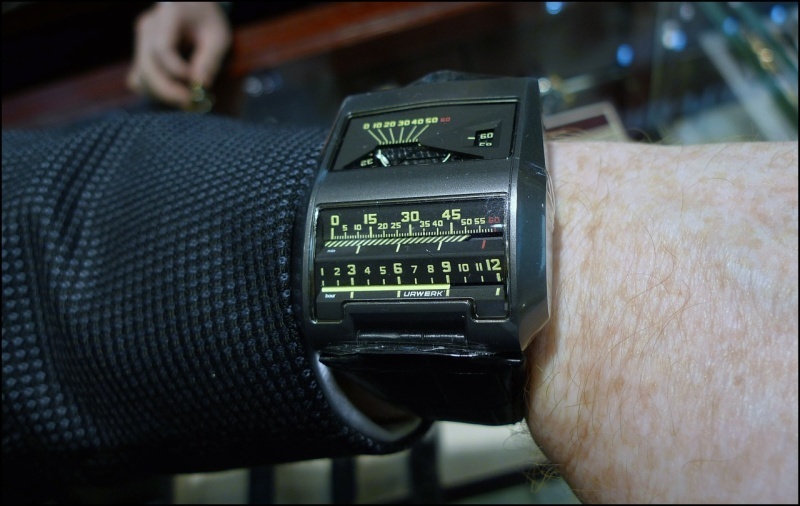
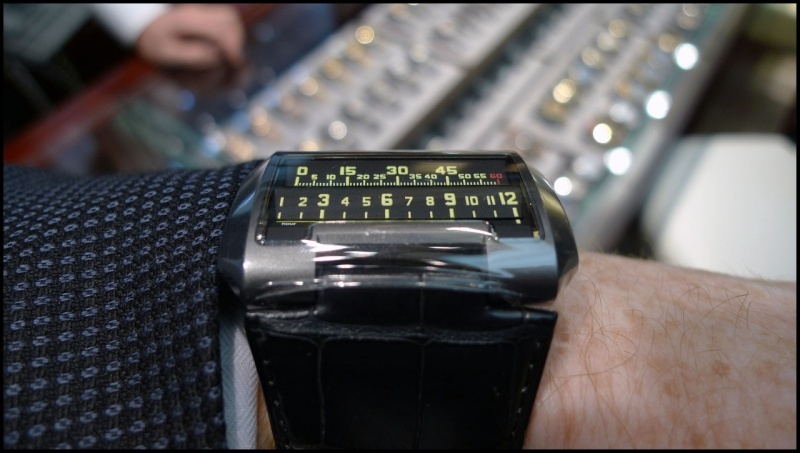
You have had some famous collaborations over the years, such as the Opus 5. Is this something that you plan do more of?
“This is something that either comes up or not. I am open for collaborations with others but I don't go searching. We have enough to do. In 2001 we did the Goldpfeil, in 2005 the Opus 5 and now the Nitro (C3H5N3O9) with MB&F."
"Max (Busser) and I met through the 103. He was quite impressed with it and we have continued the relationship since 2003. We haven't collaborated on an actual MB&F Machine, but we did the Nitro with Max: MB&F made the case and we designed the movement, the mechanical side. It was a great exchange between the two of us because we respect each other. Working with a different team is very inspiring for all of us as it makes us think outside our usual experiences.”
I asked about the fine adjustment on the escapement that is available to the owner …
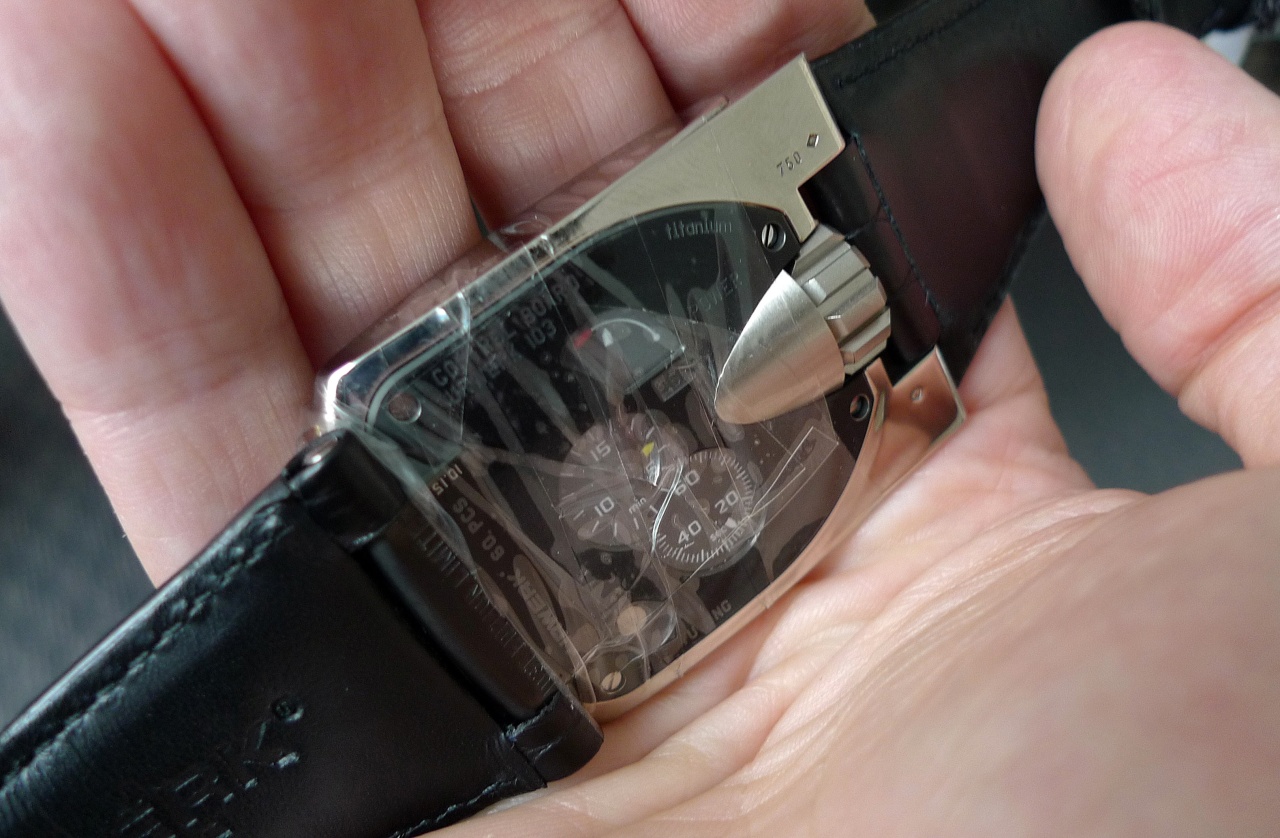
“The adjustment on the escapement is plus or minus 30 to 50 seconds. This complication is 'idiot-proofed' so you can't do any damage. Even the winding has a slipping spring that allows you to continue to wind the watch without doing damage. This is important because the crown is so large that you could generate great winding torque. And you know when the watch is fully wound by the PR display.”
The complex cases and sapphires were difficult to create in the early days. Have manufacturing techniques made things easier today?
“It is still more complicated than a round case but it is really just a case of finding the right people to work with. The main challenge in Urwerk watches is the design and construction of the movement. For example the minute hand has a clearance from the sapphire of only 0.1mm.
This is the 210 prototype on my wrist. We have just delivered 8 pieces. When you turn the crown you have the cylindrical spiral in the centre with a perfectly balanced aluminium cage.” [I will return to the 201 in a separate post as Felix describes the watch, its design and complications in his own words.]
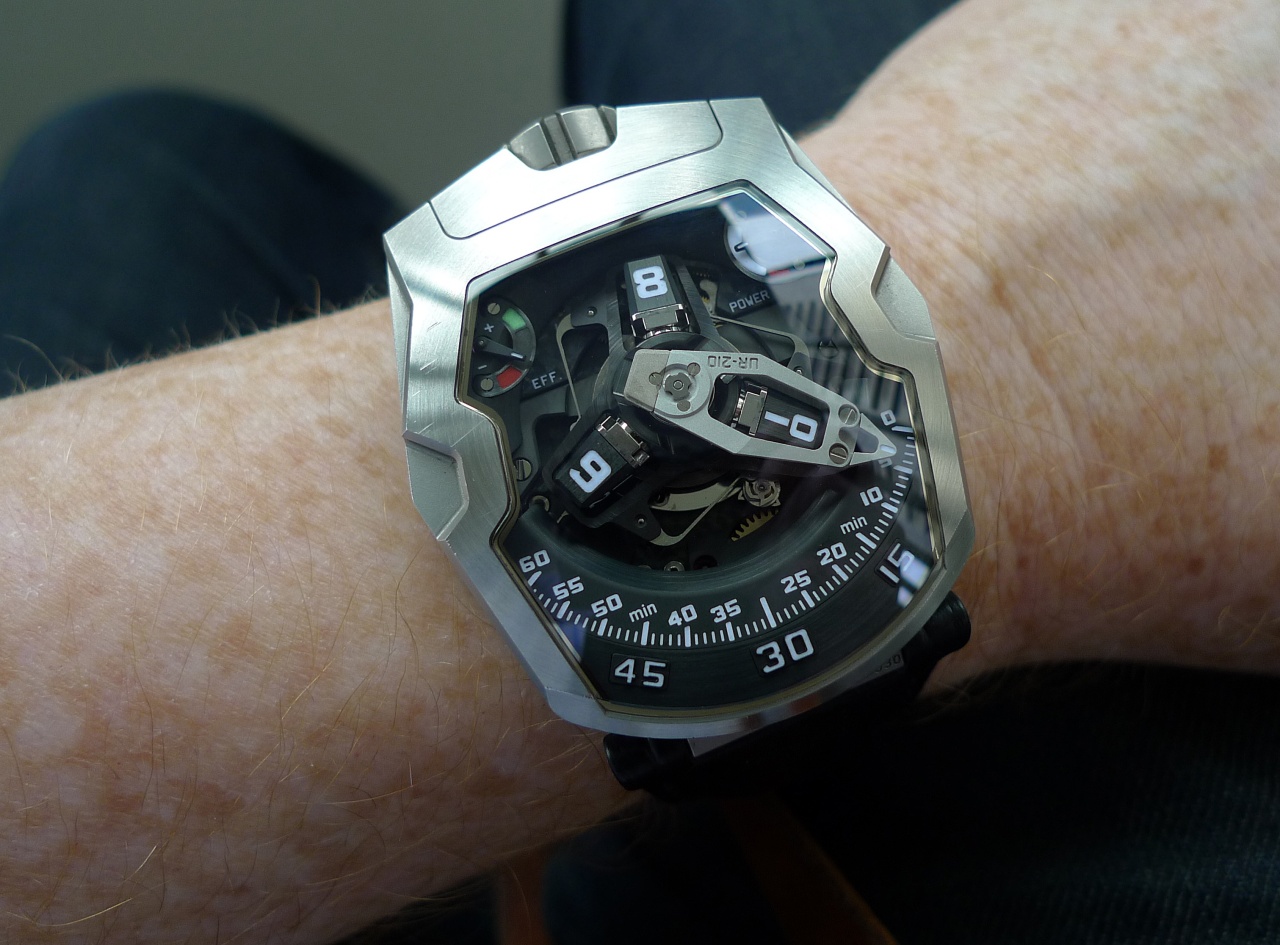
You were there at the beginning of the Internet, how has it contributed to your company?
“Today it is easier to accept our products because we have our own established niche, but we still have to explain our ideas to our potential customers.
The Internet and watch forums have been extremely important in reaching people. We obviously need each other. The forums would not exist without the watchmakers. This is a very good synergistic situation. In the beginning of Urwerk there was no Internet for us. It was tough in those days.”
How did you try to sell your watches in those early days?
“We set up at Basel and exhibited along with the AHCI. Before Vianney Halter and Francois-Paul Journe I was a member of the Academy. It started slowly, we made no salary. You had to believe in what you were doing. I worked for Vacheron Constantin at the time to make money and invested everything into Urwerk. For the first 7 years we made no money and just invested in the company.”
What advice would you give to a watchmaker wanting to start his own company today?
“I would say first try to learn and understand the basics and the tradition, followed by the complications and the quality. Then look at today's possibilities with materials and machining. Then use the best of both worlds: the modern and the traditional, and do it in a passionate and honest way, wanting to go further in watchmaking and not wanting to profit out of the company.”
I asked about servicing as it is often an area that small companies struggle with …
“We have a stable volume of watches coming in for service: between 50 and 60 watches per year. Each watchmaker is responsible for the service of their own watches, both in and outside the warranty period. And if one watchmaker leaves, his replacement will take over both the position and the portfolio of watches. For three months they work together and handover their knowledge and pieces. And when a watch comes back, like the 103, we update it with the newer modifications. The minimum service time is 2 months and maximum is 3 months. Service cost is approximately CHF500-1000 which includes case refinishing. Straps are extra to the cost, and usually need replacing. We don't need to make a profit on it but we cover our costs and time.”
What are the long term plans for the company?
“The plan is to maintain our volume and to continue innovation. Even moving more to in-house production. We will continue the revolving satellite system and will also develop crazy and different watches. We want to keep this balance.
The company is very stable. During the peak of the world economic crisis in 2007-08 it was difficult for 6 months. This was even more noticeable after the euphoria that preceded that period, but we have set up the company in a very balanced way and we are very stable and strong.”
Do you have external financial backers?
“We have no external backers and just finance ourselves. This took some years.”
I was interested to understand the balance between traditional horology and modern production.
“We use a lot of ARCAP (a copper nickel alloy) that is more stable than brass to machine. We also use a lot of titanium which is light. Much of our movement requires lightness and strength. But mostly we use traditional materials.
We have CNC machines. But while most of the watch industry uses CNC for quantity, we don't use it this way. We use it for the creation of three-dimensional parts and for the precision it provides. Some of these parts are impossible to do with traditional manual machines. The finishing and assembling, however, is manual and traditional.
Nearly everything comes from the past: the fine tuning on the 103 comes from ideas of an A.L. Breguet pocket watch, the time indication comes from Campanus night clock, the telescopic minute hand idea I also adapted from an old clock so the ideas are from history. The 3 planetary gears around the fixed centre wheel is actually from the tourbillon concept.”
Why has there been an increasing interest in watches in the last decade or so?
“Today we are surrounded by machines such as computers, but you don't really know what is going on in a computer. With a mechanical watch you can see and understand its function. Contemporary watchmaking opens up traditions to a new generation. Modern watchmaking brings new materials and techniques as well which adds new interest.”
What are your main markets?
“We are not looking for new markets such as China. But we do go where there is interest in our products. Our established markets and distribution means that we can be very comfortable with our work and production.”
I hope you enjoyed this insight into Urwerk and the world of Felix Baumgartner. Felix was incredibly open and enthusiastic about his work and I hope that shone through in the discussion.
Andrew
[My thanks to The Hour Glass, Sydney, who brought Felix to Australia to meet with local collectors.]
This message has been edited by AndrewD on 2013-03-05 19:33:45

Interview: Felix Baumgartner of Urwerk

Nice reading.

Great interview and interesting to see how the company has

horological jewelry vs. mechanical artistry

Thanks a lot for this very informative interview.

Urwerk interview
A great interview

